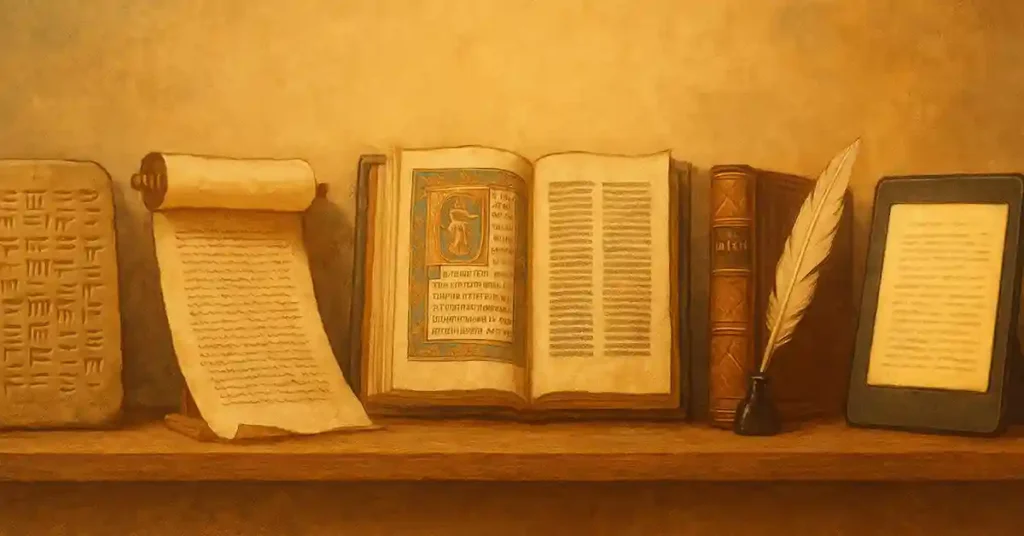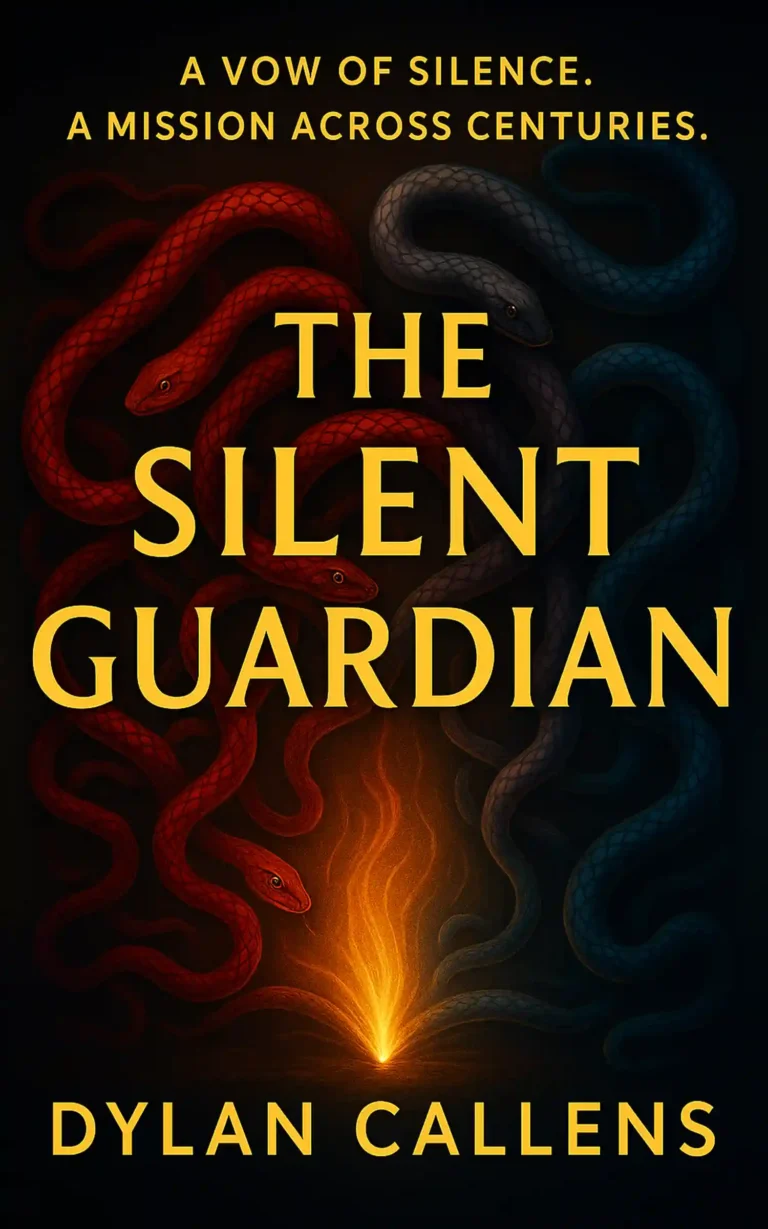I still remember slipping a battered paperback into my jacket pocket for the bus ride to high school—a ritual as sacred as morning coffee. Those dog-eared pages felt like a time machine … which, in a sense, they were. But how did we get from oral epics around campfires to streaming audiobooks on smart speakers? Buckle up! In this friendly (and occasionally cheeky) tour, I’m diving deep into the history of the novel—its roots, revolutions, and recklessly fun future.
1. Pre-Novel Storytelling: Epic Origins & Prose Experiments
Before anyone uttered the word “novel,” people still craved long, immersive yarns:
Epic Poetry – Think The Epic of Gilgamesh (c. 2100 BCE) or Homer’s Odyssey (c. 700 BCE). They were sung, not shelved, but the appetite for sprawling character arcs was already there.
Early Prose Adventures – Fast-forward to ancient Greece and you’ll find works like Aethiopica by Heliodorus (3rd century CE)—romantic adventures in prose form. Meanwhile in China, Romance of the Three Kingdoms (14th century) blended history and fiction on a grand scale.
The Tale of Genji – Written around 1000 CE by Murasaki Shikibu, this Japanese masterpiece offers a strong case for the “world’s first novel.” Court intrigue meets proto-soap-opera, but with poetic grace (and zero dragon tattoos).
The key takeaway? Long-form, character-driven storytelling predates the printing press by millennia; the novel simply gave it new clothes.
2. Gutenberg, Paperbacks, and Quixotes: Birth of the Modern Novel
When Johannes Gutenberg cranked out his first Bible around 1455, he unintentionally laid the groundwork for binge-reading. Affordable books meant bigger audiences, and soon storytellers ditched rhymed verse for stylish prose:
Early Experiments – Giovanni Boccaccio’s Decameron (1353) uses a frame narrative to stitch together tales of lust, greed, and bubonic plague (so relatable).
Cervantes’ Game-Changer – Published in two parts (1605 & 1615), Don Quixote lampooned chivalric romances and introduced concepts like unreliable narration and metafiction. Miguel de Cervantes may not have invented the novel, but he sure put rocket boosters on it.
By the end of the 17th century, readers were hungry for fictional diaries, travelogues, and picaresque escapades—anything to distract them from plague outbreaks and questionable personal hygiene.
3. Enlightenment & Epistolary Fever: 18th-Century Innovations
“Dear reader, buckle your corsets—letter-based novels are in vogue!” The 1700s saw literacy rates soar, postal networks expand, and publishers recognize a profitable new demographic: women readers. Enter:
Samuel Richardson’s Pamela (1740) – A servant girl’s letters chronicling virtue under siege—an early best-seller and morality debate club.
Laurence Sterne’s Tristram Shandy (1759-67) – A playful, footnote-stuffed romp that breaks every possible narrative rule (yes, even 300 years ago writers were “experimental”).
Gothic Beginnings – Horace Walpole’s The Castle of Otranto (1764) fused haunted castles and melodrama, proving that jump-scares translate perfectly to ink.
These works cemented the novel as a versatile vessel: you could preach, parody, or petrify—and earn decent coin along the way.
4. Industrialization & the Serial Boom: 19th-Century Popularity Explosion
Cue steam engines, telegraphs, and Charles Dickens rushing manuscripts to the press faster than newspapers print corrections. Serial publication transformed the history of the novel:
Dickensian Cliff-hangers – Writing Oliver Twist (1837-39) chapter-by-chapter for magazines forced Dickens to hook readers monthly (the original Netflix “Next Episode” button).
Social Commentary – Elizabeth Gaskell’s North and South and Victor Hugo’s Les Misérables tackled class inequity and injustice—proof the novel could entertain and agitate.
The Rise of Genre – Mary Shelley kicked off science fiction with Frankenstein (1818). Meanwhile, Arthur Conan Doyle’s Sherlock Holmes popularized detective fiction, and Bram Stoker’s Dracula (1897) put the bite in horror.
Industrial-age printing presses spat out cheap “yellow-backs” and penny dreadfuls, democratizing reading and driving authorial celebrity. (Fun fact: Dickens had fangirls long before BTS.)
Available Now
A vow of silence. A mission across centuries. One assassin holds the fate of humanity in his hands.
Adam never chose to be silent; the Phylax demanded it. Trained from childhood as a time-traveling enforcer, he slips through centuries to eliminate those who threaten the future. His latest mission: assassinate Emperor Qin Shi Huang before a ruthless plot ultimately destroys humankind.
Grab your copy of The Silent Guardian today to embark on a time-travel adventure unlike any other.
5. Global Voices Join the Conversation
The 19th and early 20th centuries weren’t solely a European affair:
China – Dream of the Red Chamber (1791) by Cao Xueqin offers a sprawling, psychologically nuanced family saga.
Latin America – José Martí’s Amistad Funesta (1885) and later the Boom novelists (García Márquez, Vargas Llosa) injected magical realism and political critique into the form.
Africa & the Caribbean – Early 20th-century authors like Chinua Achebe (Things Fall Apart, 1958) re-centered colonial narratives through local lenses, laying groundwork for postcolonial studies.
As colonial empires crumbled, diverse voices reclaimed space, expanding both readership and thematic range of the novel.
6. Modernism, Postmodernism, and the Century of “Is This Even a Novel?”
The 20th century asked, “Why settle for linear narrative?” Cue stream of consciousness, fragmented chronology, and meta-everything:
Modernism – James Joyce’s Ulysses (1922) demanded study guides; Virginia Woolf’s Mrs Dalloway turned a single day into an interior epic.
Postmodern Playfulness – Italo Calvino’s If on a winter’s night a traveler (1979) addresses “you, the reader” directly, while Kurt Vonnegut’s Slaughterhouse-Five hops between WWII and alien zoos.
Genre Galore – The century saw hard-boiled noir, cyberpunk, YA, and an outer-space full of subgenres. Fandoms blossomed; conventions—hello, cosplay!—turned reading into lifestyle.
Publishers initially fretted that radio, then film, then television would “kill” novels. Spoiler: sales dipped, climbed, and pivoted, but the form never expired.
7. The Digital Tsunami: E-Readers, Fanfic, and Web Novels
Remember 2007’s “kindle your reading habit” marketing blitz? That little e-ink screen changed everything:
E-Books & Self-Publishing – Suddenly, authors bypassed gatekeepers. Some struck gold (Hugh Howey’s Wool), proving indie hits can outshine Big-Five releases.
Fanfiction Goes Mainstream – Fifty Shades of Grey began life as Twilight fanfic, reminding us that derivative can be lucrative.
Web Novels & Serialized Apps – Platforms like Wattpad, Radish, and China’s Qidian host millions of chapters, with micro-payments and live reader feedback steering plot twists in real time.
Audiobook Renaissance – Commuters swapped mix-tapes for narration, sometimes by celebrities (nothing like Tom Hanks reading Ann Patchett while stuck in traffic).
We’re witnessing a return to serialization—except now the “magazine” is your phone and the “cliff-hanger” arrives right when the subway loses signal. Poetic, isn’t it?
8. AI Co-Authors & Interactive Futures
It’s 2025: GPT models can outline, draft, and even mimic your style (don’t worry, I’m the friendly variety). Interactive fiction merges with video games—imagine choosing multiple endings in VR while sipping holographic coffee. Yet, even with flashy tech:
Readers crave character intimacy and emotional payoff.
Writers still grapple with blank pages (or blinking cursors).
The novel remains a flexible sandbox for exploring consciousness, culture, and cat memes (yes, Karl the Time-Traveling Tabby is coming to a bookstore near you).
9. Why the Novel Endures (and Why I Keep Buying More Shelves)
Empathy Machine – Neuroscience suggests reading narrative fiction boosts theory of mind—your brain rehearses emotions safely.
Long-Form Escapism – Unlike social media snippets, a 400-page epic invites you to unpack your emotional suitcase and stay a while.
Adaptability – Print, pixel, podcast—stories morph with tech but retain core magic: insight into other lives.
Community – From Victorian parlors to TikTok’s #BookTok, novels spark discussions, cosplay, shipping wars, and lifelong friendships (and the occasional heated argument over whether Darcy is dreamy or a walking red flag).
10. So, What’s Next?
Here’s my not-so-scientific crystal-ball reading:
Immersive VR – Step inside Dune’s Arrakis without needing SPF 9000.
Dynamic Storylines – Algorithms adjust plot beats to your reading pace or mood (sad day? the puppy survives!).
Collaborative Universes – Shared IP sandboxes where thousands of writers add canonical stories—think giant novelist jazz sessions.
Sustainable Publishing – Eco-friendly paper, carbon-neutral e-reading—because we’d like Earth to survive its own dystopian phase.
No matter the medium, the novel’s heart—complex characters, layered plots, emotional resonance—beats on.
Conclusion: Turning the Page Together
The history of the novel is a living testament to human curiosity and creativity. From clay tablets to cloud libraries, we refine tools, not the impulse: to spin yarns, to walk in someone else’s shoes, to gasp at a twist ending we should have seen coming. As both reader and writer, I find that thrilling.
So crack open (or tap open) your next book with renewed appreciation. You’re not just slacking on the couch—you’re participating in a centuries-long cultural evolution. And if that’s not an excuse to buy yet another shelf, I don’t know what is.

